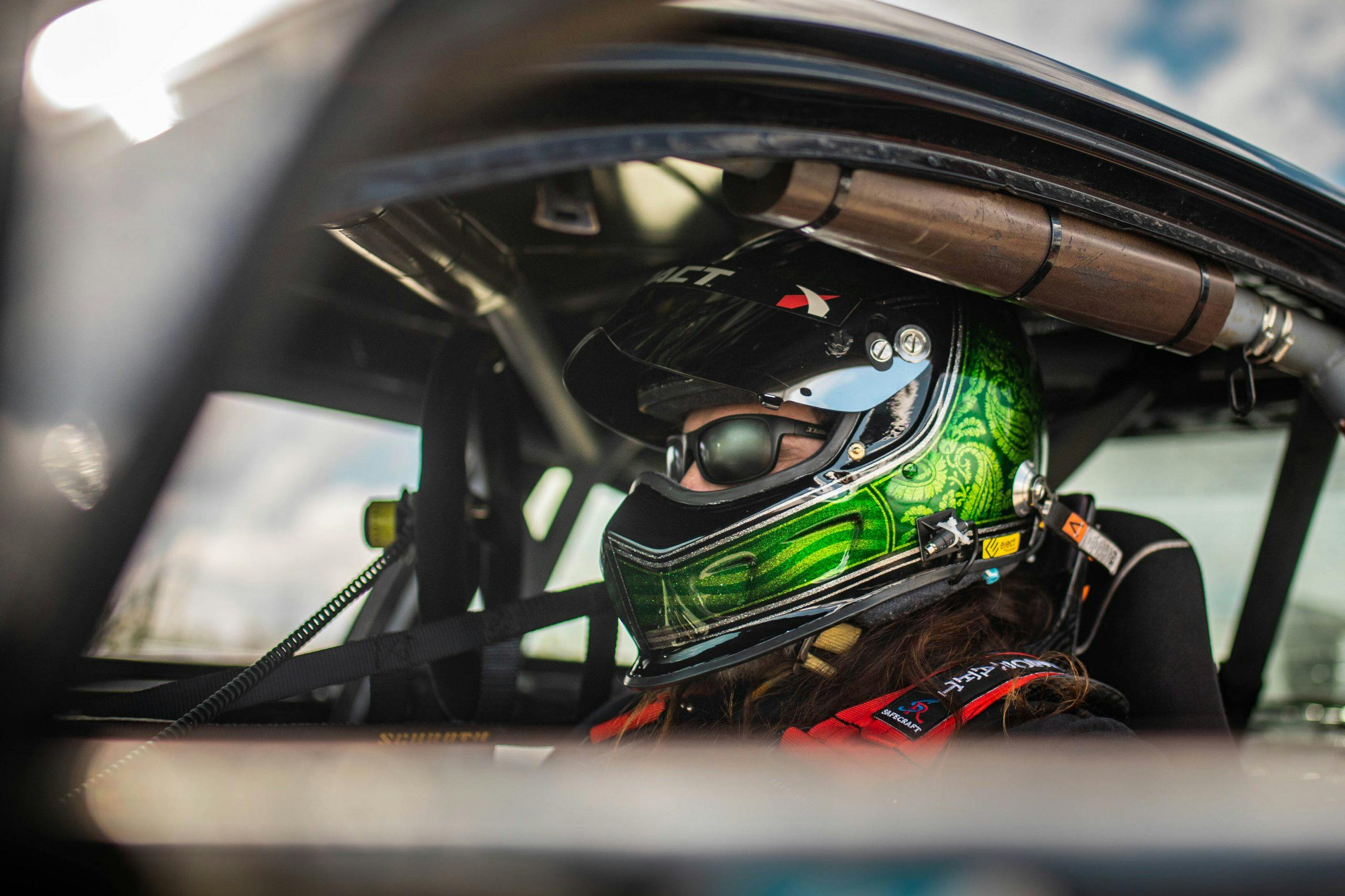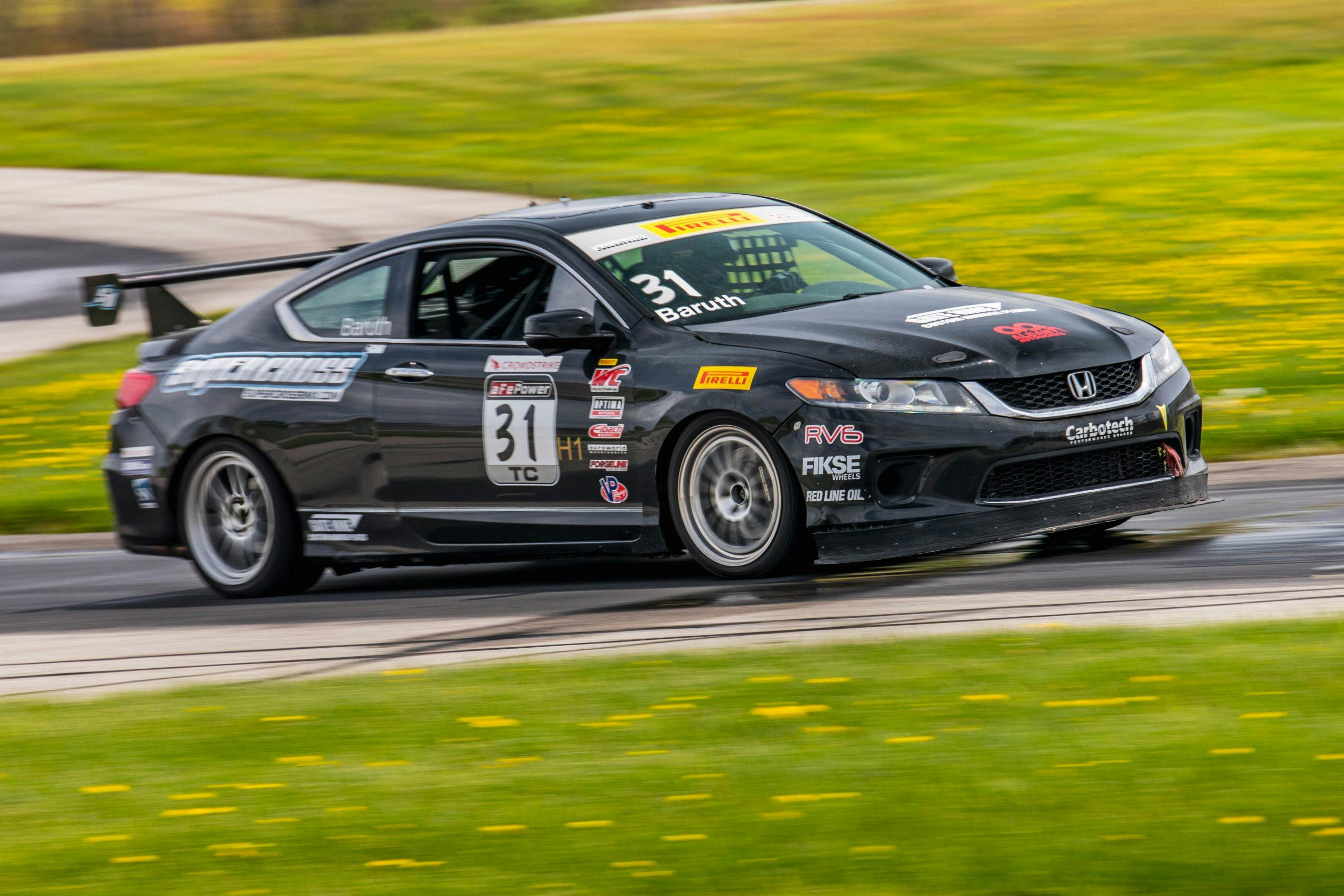Avoidable Contact #63: When it comes to race cars, you’d rather have a fake one

I come to praise fake race cars, not to bury them. You could fill a high-school basketball arena with all the people who are alive right now because of fake race cars. There are dozens of children who will be tucked into bed tonight by two parents instead of one because Dad (or Mom) chose a fake race car over a real one. This is a good thing, because as the blonde lady said in the episode of Miami Vice with Danny Sullivan, “I am a big fan of racing, but I’m an even bigger fan of life, okay?” And we haven’t even started to discuss all the ways in which fake race cars are easier to build, operate, maintain, repair, and preserve. Fake race cars are where it’s at, as far as I am concerned.
Which raises the obvious question: What’s a fake race car? Let’s start by discussing what a real race car is. A real race car is one built with the goal of going as fast as possible given a particular rule set generated by a third party. Formula One is the traditional example of this: each year the rules are laid out and all the constructors try to build the fastest car that will sneak into those rules. Another example would be the famous Porsche “Moby Dick” race car, built to maliciously comply with an innocuous sentence in a rulebook about permissible fender shape.
Amateur racing is filled with real race cars, and that’s particularly true when it comes to the “Super Touring” classes of NASA and the SCCA. My wife races her MX-5 Cup car in NASA against a fellow with a 1987 BMW 535i. To watch these completely mismatched cars run nose-to-tail into a corner is to experience true spectator satisfaction — and a little bit of concern, always misplaced so far, that the big Bimmer sedan is going to punt my girl into the next county over if they make contact.
Real race cars are often an authentic hassle, and sometimes a genuine hazard, to operate. My old SCCA Neon has so much rear toe and rear spring ratio that until the tires are warm it can actually be knocked into a spin by a bump in the racing surface. It has to be set up that way because it has to compete against cars with up to fifteen inches less wheelbase, which are simply more eager to turn. We had to make the Neon schizophrenic in order to let it keep up with a Miata through MidOhio’s Turn One. Otherwise it would be even less competitive than it is now.
The old Trans Am series was chock-full of real race cars, factory ringers tuned to tiptoe around the regulations. Circle tracks produce real race cars by the thousands. That ’87 Monte Carlo your cousin built for Street Stock? The one with the angle cut in the floorpan so it looks to the inspector like it doesn’t have stagger? Uh-huh, that’s a real race car right there.
If all those are real race cars, what are the fake race cars? Why, that’s simple. Fake race cars are all the wonderful vehicles being factory-built nowadays to compete in various spec classes and customer racing series around the world. Everybody sits down and agrees on what feels “fair”, and the the manufacturers create a few dozen identical cars each for that class. FIA GT4 is a fake race car class, as is TCR. The new Global MX-5 Cup, in which all the cars are built by one supplier, is a fake race car class. It replaced the Wild-West-ish Playboy MX-5 Cup where all the cars were built (and often mis-built) by their respective teams.
Fake race cars are all the rage nowadays. Most of the major manufacturers offer at least one fake race car. In several cases, the fake race cars in question can be run in a variety of different series just by inserting different “power sticks” or changing tires. Tech inspections are very simple for these vehicles; the sanctioning bodies confirm that the car is a factory product and then they plug into the ECU, which is designed to snitch on you, the owner, the minute you change the vehicle’s default settings.

I’ve tested several of these fake race cars. They are absolutely wonderful to operate. Fast, responsive, comfortable for a wide range of drivers. In the GT4 McLarens, you can even turn on the air conditioning. Others, like the Ferrari Challenge cars and Lamborghini Super Trofeos, look like they could win LeMans sitting still. Pretty much without exception, they are free of the vicious and dangerous habits which plague real race cars. They don’t run out of brake and they don’t start crab-walking at 160mph because a handmade bronze bushing fell out of a suspension upright originally designed for a minivan.
Some of the (with apologies to Iggy Azalea) “realest” racers, and some of the realest racing, can be found in fake race cars. Back when the Pirelli World Challenge (now TC America) and IMSA Michelin Pilot Sport Challenge (once known as Koni, then as Continental) had a bunch of real race cars, you’d often see events won by half a lap or even a full lap thanks to grievous disparities between various teams’ skill at interpreting the ruleset. Now you have six-hour contests which are decided by two or three car lengths, thanks to the thoughtful and measured way in which these factory-built vehicles are competitively balanced.
Fake race cars allow real race teams to shine. They emphasize the importance of strategy, pit-crew speed, driver skill, and conservation of tires/fuel/track position/whatever. They make it easier for new teams and new drivers to make an impact. With an Amex Centurion Card and the phone number to your local exotic car dealer, you can have a competitive race team built from scratch in something like two weeks. Try that in NASA American Iron or SCCA STU and you’ll spend a year troubleshooting fuel pump problems before you qualify even close to the front half of the field.

The best part? Fake race cars are safe. They’re built from the ground up to comply with rules that leave generous allowances for weight and dimension. I’m not aware of any driver being killed in a modern GT4 or TCR car, which is a lot more than I can say for the majority of homebuilt classes. Go look at the safety cage in a BMW M4 GT4. I’m pretty sure you could drive it off the Golden Gate Bridge at the top of fifth gear and survive.
They’re so much fun to drive that many people are now buying them not to race. The classifieds of various high-end publications are filled with GT4-class exotic cars which have never seen a green flag, much less a checkered one. You can find fake race cars in all the private garages at the new race tracks, faithfully liveried in replica Gulf or Martini schemes but without so much as a single sanctioning-body sticker. I can’t blame their owners. Were I wealthy, I would stable a McLaren or AMG GT4 car at each one of my favorite tracks, just for amusement’s sake.
I’m not wealthy, however, which explains why I found myself driving my old World Challenge Accord at Grattan for a VR Performance event last month. VR Performance puts on trackdays for the clued-in crowd; check them out at vrperformance.com. They graciously allowed me to crash the party with my bashed-up Honda on 2018-vintage Toyo tires that had been stored outside for the past two winters.

This old Accord, campaigned by both its original builder and by your humble author with some small measure of success in amateur and professional circles, is very much a real race car. Three teams ran Accords in World Challenge. Each team started with showroom-fresh street cars, and each had their own special tricks which were hidden from the others. My car has a rear suspension rebuilt with box-section tubing to create an effective spring rate approximately ten times that of the standard Accord, fenders which were creatively bent to give the impression of crash damage while adding another couple miles per hour to the top speed, and a transmission with components which I am still not at liberty to discuss.
Compared to the suave and effortless mastery of something like a McLaren 570S GT4, my Honda is a rolling nightmare. To get close to the power level of the BMWs in World Challenge, my team tried three exhausts before settling on one with an interior noise level just short of what you’d get standing behind a DC-10. The Accord’s ECU had to be tricked with some dicey shorted wiring into permitting the engine to rev as high as it does, so sometimes the ABS and the power steering just turn off for no reason before turning back on with no warning two seconds (or two hours) later. The front brakes basically stop working after the second lap. Sometimes the rear brakes catch fire. Were this a trackday car I could fix all of this; were this a GT4 factory build car, I wouldn’t have the problem. But this is a car that needs to meet a very specific ruleset for both SCCA and World Challenge, and part of that ruleset, apparently, is “use the same brakes as a 2012 Honda Pilot to do 153mph on NCM’s front straight.”
On cold tires, the Accord will lurch sideways coming out of pit lane; on hot tires, it will sometimes refuse to turn unless you stab the brakes with your left foot in mid corner. At high speeds the differential can sometimes get confused into a situation where it rapidly alternates between providing grip to the left and right front tires, which causes the whole front end to shake back and forth as if it were in the jaws of an agitated tyrannosaur. Great fun when you’re trying to make a pass, for both you and the other guy.

This raggedy contraption and I have seven wins, a regional championship, and a track record. We have these things because the original rules for our NASA Honda Challenge series were intended to encourage S2000 sports cars to compete. Those rules had a hole large enough to drive a 282-horsepower, 3200-pound family car with no brakes through. Which is a very “real” thing to do. But it also made things no fun for the S2000s, which couldn’t even stay on the lead lap with my Accord. So they all stayed home for the last race of the season. I don’t blame them.
The sun is setting on real race cars. From NASCAR to IndyCar to IMSA to SCCA’s revitalized SRF3 class, the drivers are voting with their wallets for standardized equipment, factory-built chassis, and easily-verifiable compliance. Is that why the fans seem to have stayed home over the past few years? Or is the only thing that is still bringing them out? No one seems to know.
If you disagree with this state of affairs — if you do not share my affinity for fake race cars — then I have a real race car to sell you. One of a kind, plenty of stories, built by a great shop. It has character and provenance. The engine can be easily replaced at no charge, assuming that at least one of your neighbors parks an Odyssey minivan outside every night. Let me know if you’re interested. I’m eager to sell. I know where I can get a GT4 car at a very good price. One owner, never raced. Just need to clear this thing out of my garage… and possibly borrow a few bucks to cover the gap in value between a real race car and a fake one. Friends, Romans, countrymen — lend me your extra cash!





Hi Jack, thank you for such an entertaining article.
What wheel setup, offset do you recommend or works for you?